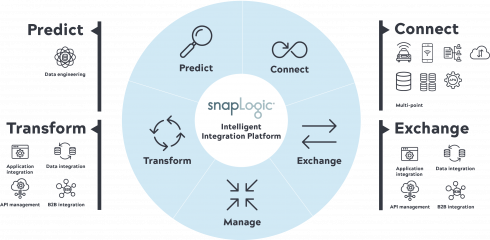
SnapLogic announced the latest release of its Intelligent Integration Platform, adding new AI capabilities that recommend completed pipelines from within an organization or from the SnapLogic Patterns Catalog.
The August 2019 release also includes enhanced search capabilities through the Iris AI that now directs users to project spaces containing the pipelines that are most relevant for them; a new API developer portal; SnapLogic eXtreme; and Azure Databricks support for customers running data workloads on AWS.
“Our new AI-powered pipeline recommendations and improved search capabilities will dramatically simplify and accelerate complex integration projects so our customers can focus on strategic pursuits that drive their business forward,” said Vaikom Krishnan, SVP of engineering at SnapLogic.
Crystal 0.30.1 released
Crystal 0.30.1 has been released with regression fixes and support for a recent version of dependencies. No new features were added, according to the Crystal team.
The team said it fixed a bug/unhandled case in LLVM, a constraint in the standard library that that got in conflict with how fibers were resumed by the runtime, as well as fixing a socket leaking after failed SSL connect.
CodeStream is now available on premise
CodeStream is now available as an on premise solution and it includes all of the features and integrations with team messaging and issue trackers while keeping the discussions and code snippets on a user’s own servers, the company explained.
According to the company’s website, CodeStream “makes it easy for teams of any size to build, share and retain knowledge about their codebase.” Now, CodeStream OnPrem is a docker-ized version of the CodeStream Cloud service that can be installed and operated entirely on premise. It requires a Linux host OS running Docker.
GitHub Classroom announces new integration with learning management systems
GitHub Classroom announced new integrations with learning management systems (LMS) such as Canvas and Google Classroom, which allows teachers to sync their list of students from their LMS with GitHub Classroom without the need for manual copying.
“This means less time spent making GitHub Classroom work with your existing tools, and more time spent being an amazing educator,” GitHub Classroom wrote in a blog.
Each LMS requires slightly different configuration to set up, which the company explained here.






